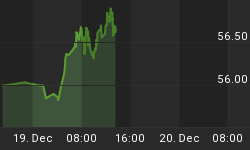A Frightening Worldwide Currency Crisis: An Unstable Monetary System
I was asked to reenact a dramatic scene from the movie Rollover (1981), which is a rather frightening worldwide currency crisis, depicted when oil money is withdrawn from the banking system. Although a total hypothetical scenario, it brings into crystal clear focus what systemic risk is all about.
To put this into the proper context, we might visit something seldom talked about today and something I have not used in the past several years at any of the conferences that I present at -- namely, the Golden Pyramid, which is attributed to Mr. John Exter.
You can get some very good background on Mr. Exter from "A Moneychanger Interview: Mr. John Exter Simplex Munditiis," provided by Mr. Franklin Sanders.
Greg Pickup also did two excellent articles and mentions Mr. Exter's work in both of them. One is called "The Value of Money," and the other is "They Rang a Bell."
John Hathaway, the senior portfolio manager at Tocqueville Asset Management L.P., wrote an article in 1999 called "The Golden Pyramid," in which he mentions the Exter Pyramid.
Finally, for the purposes of this article, my friend and fellow newsletter writer Jay Taylor did an article titled "Systemic Fiat Currency Risk & John Exter's Golden Triangle."
John Exter's depiction of the Golden Triangle can be viewed below. This is a representation of the financial system in John's era. First it must be pointed out that an upside-down pyramid is a very unstable structure, whereas a normal, right-side-up pyramid is an extremely stable one. Does this imply the whole financial structure is unbalanced?
If we examine the pyramid from the tip (bottom) up, we are looking at the most liquid assets; and as we move up the pyramid, the financial aggregates not only expand (they must continue to expand in a fiat system), but they also become less and less trustworthy. Since the entire financial system is faith based, this could also be viewed as a confidence meter.
People have had faith in gold through all of recorded history, whereas many currencies have come and gone in the monetary history of mankind. The financial markets seem capable of inventing all sorts of paper asset investments; bad or marginal loans are packaged together and turned into high-yield "investments." All kinds of financial "insurance" packages are written to hedge risk; multitudes of Exchange Traded Funds have emerged that bet on price movement of the underlying asset. Of course, let's not forget about the hedge fund -- once a rather obscure investment vehicle that few knew of or even had the ability to locate, it now has become mainstream. And this hot money moves into and out of various markets with noticeable effect.
The Exter Pyramid does not include derivatives, which would be at least in my view at the very top of this unstable structure. There are many problems with derivatives, but the primary one could be the ability of the parties to pay.
Derivatives have exploded over the past two decades and it is well outside the purpose of this briefing to delve into the topic. However, Mr. Puplava of Financial Sense Online was ahead of the curve as usual and wrote about this topic in his article "Pedal to the Metal." Additionally, the reader should study the topic of derivatives carefully, and this can be accomplished with some effort by reading about the threat posed by these financial instruments. See the first three or four articles (or more, of course, if you wish) on the Financial Sense Web site.
Looking at the third-world debt loan at the time a mere $1.3 trillion was a concern to Mr. Exter, today we know how the problem was resolved, due to Mr. Perkins, a former respected member of the international banking community. In his book Confessions of an Economic Hit Man, he describes how he helped the U.S. cheat poor countries around the globe out of trillions of dollars by lending them more money than they could possibly repay, and then taking over their economies. See "How the U.S. Uses Globalization to Cheat Poor Countries Out of Trillions."
The Golden Pyramid
So in the movie Rollover, When the Notes Come Due, all heck breaks loose because long-term financial instruments have to be sold all at once and moved into cash to settle with the oil investors. This causes massive selling pressure and moves market valuations tremendously. You might call it a significant shift in investor psychology in an instant!
Thus the financial instruments that the market has the least confidence in fall in value the fastest (greatest amount), and those that the market has tremendous faith in (such as gold) move up in value. In this hypothetical scenario, it all takes place in just a few trading days. I have no idea whether the writer of the movie Rollover was familiar with Mr. Exter's work or not.
Finally, it is rather ironic that this movie was released after gold had peaked on January 21, 1980, and was actually beginning a long bear market.
To take a look at this reenactment on YouTube, please click here. Don't laugh I am not a professional actor by a long shot but nonetheless if you view with an open mind you should get the gist of this movie sequence.
Maybe with this depiction on the YouTube Web site, some younger readers will become interested in the precious metals markets!















